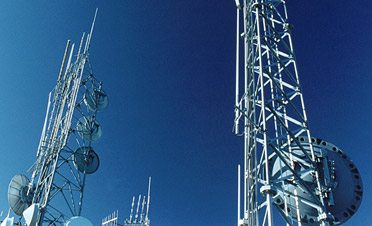External passive intermodulation (PIM) has always been a concern when deploying wireless networks. However, PIM has become even more of a challenge with the introduction of new 5G technologies and infrastructure. In the simplest definition, PIM occurs when two or more wireless signals mix together and create additional frequencies. This causes interference and can significantly deteriorate network capacity and coverage. In fact, according to prevailing estimates, a drop of 1 dB in uplink sensitivity due to PIM can reduce wireless coverage by up to 11 percent in a macro network. Unsurprisingly, mobile operators have made reducing PIM on cell sites one of their top priorities as they roll out 5G networks. Below are some key strategies for doing so.
What is PIM?
PIM is interference resulting from the nonlinear mixing of two or more frequencies in a passive circuit. If the interference coincides with an LTE or 5G network’s uplink receive frequencies, it can adversely affect network performance and throughput. The lower the level of PIM, the better the coverage and capacity.
There are many potential causes of PIM, including:
- Loose metal-to-metal contacts
- Poor quality components that rust or corrode
- Metal shavings or other site contamination
- Nearby frequency sources (power lines/equipment)
- Obstacles in the RF path including supports for stealth enclosures
- Water infiltration
The highest risk for PIM occurs in close proximity to the many antennas on a cell tower; in front, above, below, and even behind them. The zone is defined as:
-
- Ten feet directly above or below an antenna
- Five feet behind an antenna
- One hundred feet in front of an antenna
Many traditional installation products (including metal cable hangers, hose clamps, poor-quality components with rust or corrosion and loose hardware or brackets) have been identified as PIM generators and must be eliminated.
Reducing PIM
Mobile operators are now discovering that elevated levels of external PIM can be generated around antennas by certain products which have been used in industry standard installation practices for years. For example, there are dozens of cables in cell towers that connect antennas to remote radio heads, and each cable needs to be attached with one or more cable hangers. In fact, some estimates have cited as many as 350 cable hangers on a single tower top!
Aside from using high-quality cables and watertight enclosures and keeping tower sites clean, mobile operators are working to eliminate excess metal from tower tops. One of the key methods of doing this is by switching from metal to polymer materials for cable hangers.
Traditionally, operators used u-shaped metal hangers with grommets inside. Each cable was fitted into a grommet, and the grommet was placed in the metal hanger and secured to the tower. This method required the use of multiple sizes of grommets and multiple sizes of brackets to support the different types of cables on a tower top.
With the deployment of LTE and 5G networks, the drive to eliminate metal from tower tops has s accelerated significantly. Specifically, metal cable hangers and grommets are being replaced by hangers made of polymer materials. Using polymer cable hangers offers four key benefits:
Reduced PIM – as non-metallic components, polymer hangers significantly reduce the amount of PIM on tower tops.
Reduced complexity – some polymer hangers can be made to wrap around individual cables or bundles of cables, which eliminates the need to use hangers and cables of specific sizes for specific cable diameters. Installation is simpler because there’s one hanger type that works in every situation.
Simpler inventory management – operators and installers need only carry one type of cable hanger instead of having to carry many of them of different sizes.
Faster installation – the process of selecting the correct grommet, fitting it to a cable, placing a u-shaped metal hanger around it can take a minute or two. In contrast, locking a polymer hanger around a cable or bundle of cables takes a few seconds.
In conclusion, communications equipment vendors are now offering polymer cable hangers that deliver PIM reduction, installation simplicity, and reduced installation time. As a result, the battle against PIM at the tower top has brought unforeseen benefits by not only reducing PIM levels, but improving operator business models as well.

